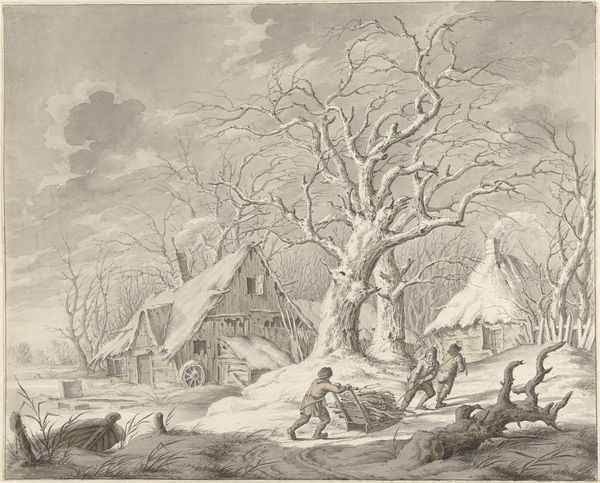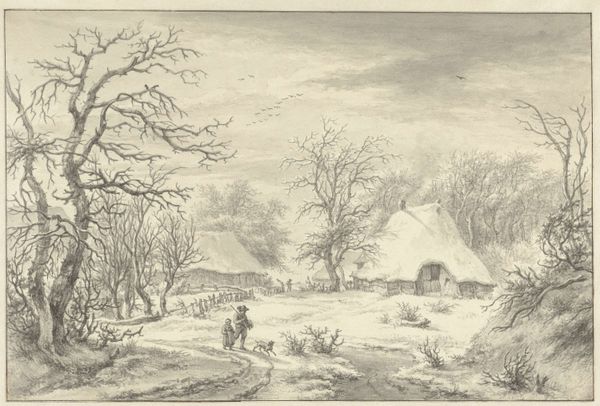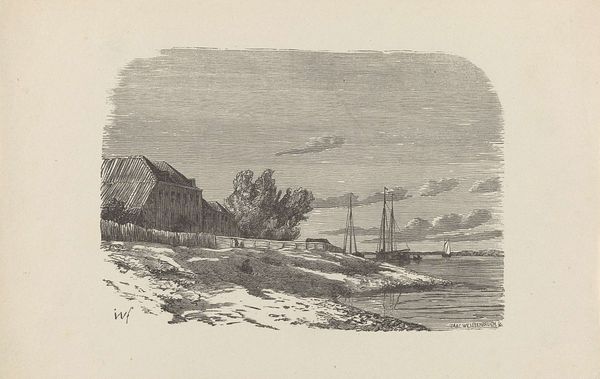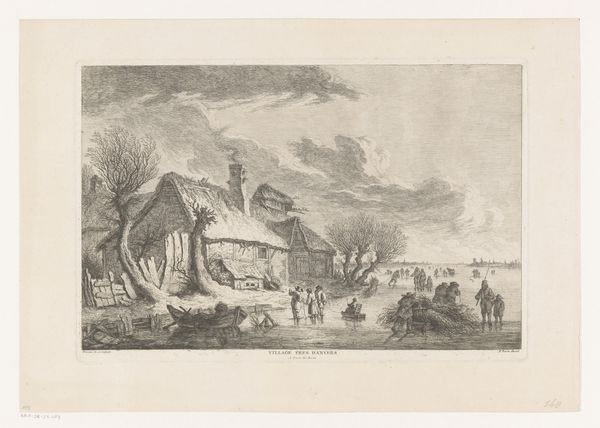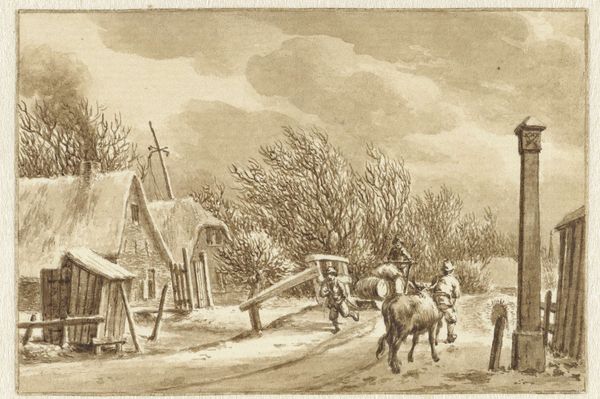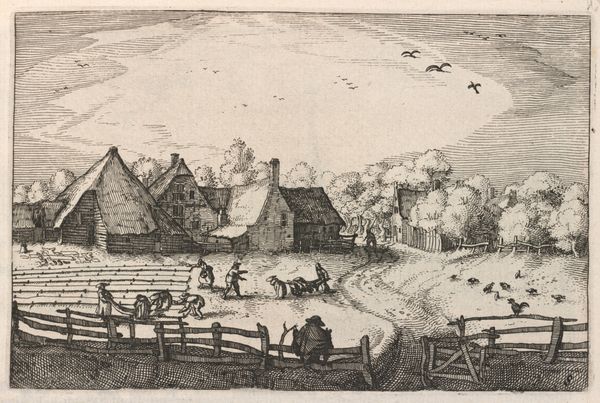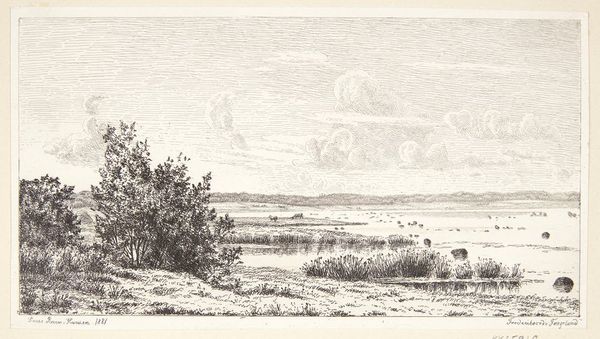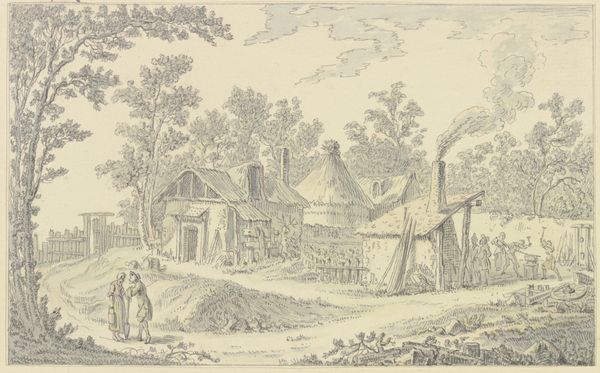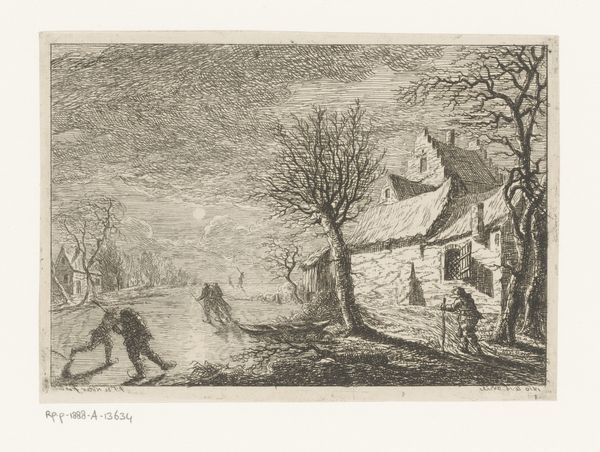
print, etching
# print
#
etching
#
landscape
#
etching
#
romanticism
#
genre-painting
#
realism
Dimensions: 90 mm (height) x 151 mm (width) (bladmaal)
Curator: Looking at "Winter Landscape near Vejby", an etching by P.C. Skovgaard from 1844, the sheer bleakness hits me immediately. Editor: The sparseness of the landscape really captures the harshness of winter in the 19th century. It makes you wonder about the realities faced by the working class in rural Denmark at that time. Curator: Absolutely. And the composition only adds to that feeling. Note the stark, almost minimalist quality in his rendering of the fields and sky. Skovgaard has managed to suggest texture with just line work and hatching. Editor: Indeed. The figure in the background, seemingly carrying a heavy load, amplifies the overarching themes. The weariness she carries can be viewed through the lens of gendered labor expectations, a constant demand for work in a difficult setting. The presence of the birds is also compelling. Curator: Agreed, it invites the question of balance—or imbalance—between the human figures’ needs and the demands of their surroundings. He creates space by employing atmospheric perspective and gives depth to an otherwise simple scene, adding a melancholic weight. The composition adheres beautifully to principles of visual harmony, achieving a delicate equilibrium in terms of light and dark. Editor: Exactly. This wasn't just a picturesque depiction; Skovgaard subtly interwove observations about social realities into his landscapes. Vejby was part of an evolving narrative, as this was in the transition from a purely agrarian to more market-driven models, further compounding pressure. It prompts reflection on rural-urban dynamics during this period of transformation. Curator: And how this etching can reflect and contribute to an understanding of Skovgaard as part of broader aesthetic and philosophical discourses about humans' connection with, and perhaps also alienation from, their landscape. It serves as a reminder of nature's profound impact on societal development and lived experience. Editor: And for me, it reinforces the etching's beauty resides not just in its visual elegance, but also in its capacity to spark discussions on the intersections of gender, work, and place in 19th-century Denmark.
Comments
No comments
Be the first to comment and join the conversation on the ultimate creative platform.
